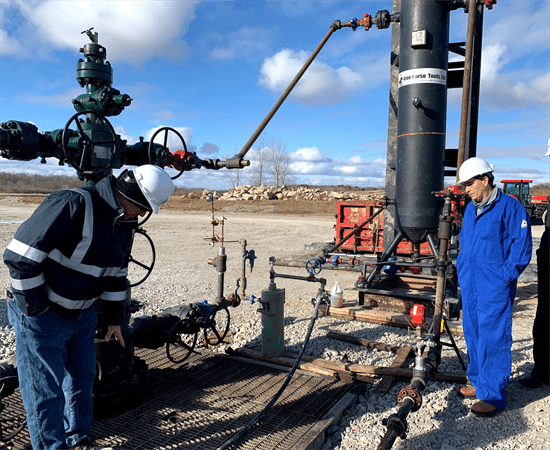
U.S. Rep. Troy Balderson (R-OH) criticized a recent report from the think tank Ohio River Valley Institute that said 22 counties in Ohio, Pennsylvania, West Virginia responsible for 90 percent of the oil and gas production in the Appalachian region saw their share of jobs, personal income, and population all decline since the start of the fracking boom in 2008.
“This so-called report is nothing more than a scam to undermine the energy sector, which has long withstood slanderous labels and stereotypes that demean the livelihoods of blue-collar workers,” Balderson said. “In reality, thousands of Ohioans rely on energy jobs to support their families, and in turn, these jobs lay the foundation for the regions’ total economy by supporting small local suppliers, restaurants, and more.”
Balderson and a group of key Ohio stakeholders found the report misleading and said it does not present all relevant data, such as figures showing per capita income increasing for residents of the seven Ohio counties included in the report. According to Ohio Development Services Agency data from 2008-2018, all seven counties – Belmont, Carroll, Jefferson, Harrison, Guernsey, Noble, and Monroe – experienced an increase in per capita income by an average of 36.67 percent.
“Rather than attacking these jobs, we should be asking ourselves where Ohio would be without the oil and gas industry—and the reliable, affordable energy it produces,” Balderson continued.
Following Balderson’s statement on the report, George E. Stark, director of external affairs for Cabot Oil & Gas Corporation, tweeted that just as the oil and gas industry creates hundreds of thousands of well-paying, steady jobs for Ohio residents, the same goes for Pennsylvania and West Virginia.
“Besides the massive drop in unemployment rate since the shale boom started, we have seen businesses creating jobs and investing in these communities,” said Matt Hammond, president of the Ohio Oil and Gas Association. “This investment, in part, has led to specific examples of new school buildings and community centers being constructed, funded almost entirely from the oil and gas industry.”
Other findings that contradict the Ohio River Valley Institute claims include the industry’s impact on Ohio’s economy. According to a 2015 American Petroleum Institute report, the oil and gas industry supports more than 262,000 jobs in Ohio and annually contributes $37.9 million to the state’s economy.
Additionally, a 2020 Global Energy Institute study found that banning fracturing would cost Ohio 700,000 jobs and $245 billion in gross domestic product (GDP) by 2025. A fracking ban would also decrease Ohio household incomes by $119 billion and increase the cost of living by $5,625 per person. The same report found that a similar ban in Pennsylvania would cost the state 609,000 jobs and $261 billion in GDP, decrease household incomes by $114 billion, and increase the cost of living by $4.654 per person.
“This is further proof,” Balderson concluded, “that the Biden Administration should actually support America’s job-creating energy industry rather than actively working to dismantle it.”